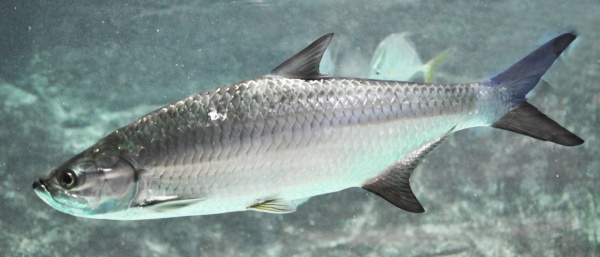Facts About Atlantic tarpon
The Atlantic tarpon, often referred to as the "silver king" is a remarkable ray-finned fish that inhabits coastal waters, estuaries, lagoons, and rivers of the Atlantic Ocean. This majestic species flourishes in tropical and subtropical regions, with sightings recorded from as far north as Nova Scotia to as far south as Argentina.
Tarpons are renowned for their impressive size, reaching up to 2.5 meters in length and weighing as much as 161 kilograms. They spawn at sea and primarily feed on small fish and crustaceans. A unique feature of tarpons is their ability to fill their swim bladder with air, enabling them to survive in low-oxygen environments. They are easily recognizable by their greenish or bluish back, shiny silver sides, large upward-turned mouth with a bony plate in the lower jaw, and a long dorsal fin ray that almost reaches their tail.
In the United States, the tarpon holds a special place as the official state saltwater fish of Alabama. Anglers highly value this fish for its size, strength, and the thrilling aerial displays it performs when hooked. Due to its popularity in sport fishing, specific regulations in Florida and Alabama require a special permit to kill and keep a tarpon, ensuring the species' conservation.
Tarpons are not limited to the East Coast. During migration, they can be found in various regions, including the Florida Keys, the Texas coast, and Mexico's Costa Esmeralda. They are widely distributed on both sides of the Atlantic Ocean, favoring the warm coastal waters of the Gulf of Mexico, Florida, and the West Indies.
Interestingly, tarpons have been documented migrating through the Panama Canal from the Atlantic to the Pacific and back for over 70 years. They are remarkably adaptable, tolerating a wide range of salinities and temperatures. There is even a non-migratory population of tarpons residing in the Rio San Juan and Lake Nicaragua.
